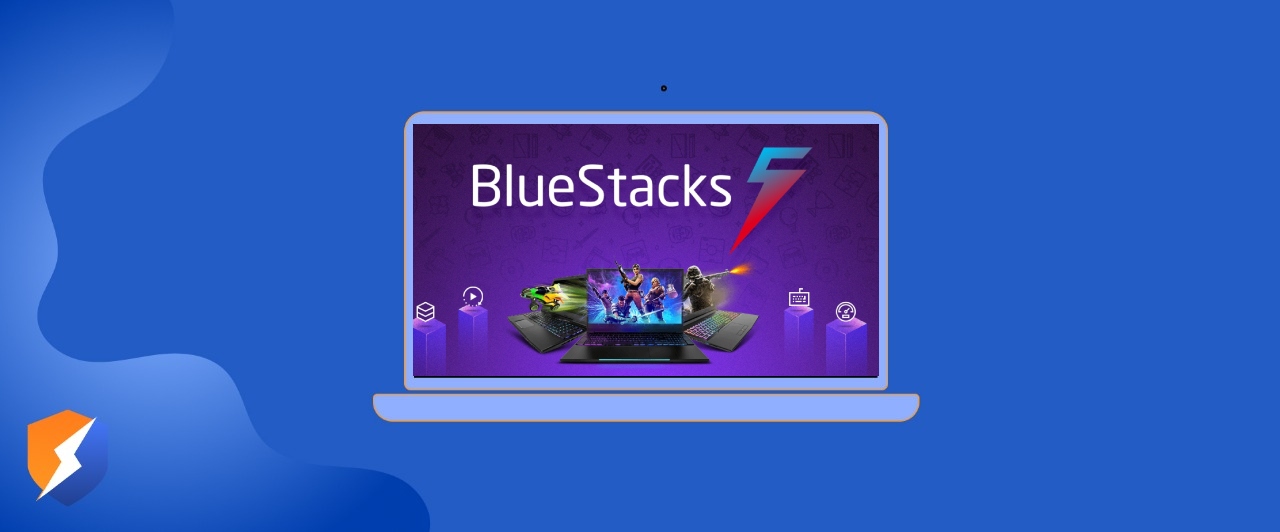- By Hammad Memon
- August 17, 2025
Table of Contents
In a digital world full of Android emulators, you might be curious: Is BlueStacks safe? Is the emulator free of malware? Does it respect your privacy? Could it slow your computer down? Let’s explore what BlueStacks promises, what risks exist, and how you can use it securely.
What is BlueStacks?
Bluestacks is one of the most popular and safe emulators for Android, with its availability ranging from Windows to macOS, with over a billion downloads and strong backing from partners like AMD, Intel, and Samsung. It supports both free and paid versions and even includes cloud-based streaming features.
Technical Safety and Security
Legitimate App with False-Positive Flags
BlueStacks is a legitimate app, often flagged by antivirus tools due to its virtualization features rather than any malicious behavior. If you download it from the official site, those warnings are typically false positives.
Regular Security Patching
The team actively patches vulnerabilities—such as a critical flaw in older versions—and recommends regular updates to stay protected.
Sandboxed App Isolation
BlueStacks runs each Android app in a separate virtual environment. This means even if an app is compromised, it won’t spread to your PC unless you allow elevated permissions.
Ads and External Links
Built-in Ads & Sponsored Apps
The free version includes some sponsored apps or subtle ads. These are part of its freemium model but are not intrusive or harmful.
Watch Out for Malicious APKs
Installing apps from outside the Play Store introduces risks. Unverified APKs can carry malware that may bypass emulator protections.
System Requirements and Compatibility
Before installing BlueStacks, it’s important to understand the hardware requirements. BlueStacks is a powerful emulator and requires a reasonably modern machine to run smoothly. For Windows users, a minimum of 4GB RAM and 5GB disk space is required, though 8GB or more is recommended for better performance. On macOS, support is available for most Intel and Apple Silicon Macs, but older models may struggle.
BlueStacks also requires virtualization to be enabled in the BIOS for optimal operation. This improves performance significantly, but some users might need guidance on enabling it. It’s worth checking compatibility before installation to avoid frustration later.
Versions and Features of BlueStacks
BlueStacks has evolved over time, with each version introducing new features and improvements. BlueStacks 5, the current flagship version, offers better performance, reduced RAM usage, faster app launch times, and better support for multi-instance gaming. There’s also BlueStacks X, a cloud-based offering that lets you play Android games without downloading them locally. This is useful for lower-end systems, reducing hardware strain while keeping gameplay accessible.
Advanced users can also tweak settings like DPI, frame rates, and CPU core allocation. These customizations allow better control over performance, especially if you’re multitasking or running resource-heavy apps.
Comparing BlueStacks With Other Emulators
There are several Android emulators on the market, including NoxPlayer, LDPlayer, and MEmu. While each has its strengths, BlueStacks often leads due to its stability, broader compatibility, and frequent updates. It’s especially popular among mobile gamers, offering keyboard mapping, game optimization tools, and even macro support.
In terms of security, BlueStacks maintains a strong reputation. Some lesser-known emulators have been linked to adware or lack transparency in data handling. That’s why choosing a well-supported tool like BlueStacks helps reduce risk.
Use Cases Beyond Gaming
While most users turn to BlueStacks for Android gaming, the emulator is also a useful tool for developers, testers, and casual users. Developers can test their apps on different Android versions without needing a physical device. It’s also helpful for social media managers who want to run Android-only apps like Instagram or TikTok from their desktops.
Students and remote workers may also benefit. Apps like Google Classroom or Microsoft Office Android versions can be accessed via BlueStacks, creating a mobile-friendly environment on desktop platforms.
Known Issues and Troubleshooting
Like any complex software, BlueStacks isn’t without its quirks. Common issues include crashes, app freezes, or lag, especially on older machines. These are often tied to outdated graphics drivers, insufficient RAM, or disabled virtualization.
BlueStacks provides detailed help articles and troubleshooting guides on its official support page. Common fixes involve updating your graphics card drivers, enabling virtualization, adjusting memory allocation, or switching to a lower-performance mode. Community forums are also helpful for user-generated solutions.
BlueStacks Alternatives for Cloud Gaming
With the growing demand for lightweight gaming solutions, some users may consider cloud-based options. Services like BlueStacks X allow streaming of games directly to your device without heavy system requirements. Other alternatives like Google’s now-defunct Stadia or NVIDIA’s GeForce NOW have also paved the way for cloud gaming.
BlueStacks X supports hundreds of titles and is ideal for users who want the Android experience without the resource overhead. It works across multiple browsers, including Chrome, Edge, and Firefox, adding flexibility for users on different operating systems.
Content Moderation and Community Safety
No Central App Vetting
BlueStacks doesn’t screen third-party apps. Users are responsible for choosing safe, reputable software to install within the emulator.
Community Feedback Matters
User communities provide valuable insights into performance and safety. Most reports of issues are tied to malicious downloads rather than the emulator itself.
Privacy and Data Protection
Information BlueStacks Collects
BlueStacks collects basic data such as IP addresses, device specs, and usage stats for optimization. It does not sell personal information but may share aggregate data with partners.
Limited Access to PC Files
Unless you explicitly grant access, BlueStacks stays within its virtual sandbox. Your system files remain protected unless you alter those permissions.
Performance and Resource Use
Resource-Intensive by Nature
Emulation consumes CPU and RAM. On mid- or low-end devices, this might cause slowdowns. Configuring settings for performance can help.
Not Evidence of Malicious Behavior
High resource usage is normal and doesn’t indicate malware. Some users mistake this for crypto-mining activity, but it’s just the cost of emulation.
So, Is BlueStacks Safe?
Yes, but with some curveballs.
BlueStacks is a widely trusted Android emulator with regular updates and strong company backing. It’s safe when downloaded from the official website and used properly. The main risks come from third-party APKs and misconfiguration.
Tips to Use BlueStacks Safely
- Always download BlueStacks from the official website
- Keep the software updated to avoid known security vulnerabilities
- Install apps only from the Google Play Store
- Avoid downloading or sideloading untrusted APKs
- Configure BlueStacks for optimal performance and safe resource usage
- Use antivirus software to scan files and protect against threats
- Limit app permissions unless absolutely necessary
FAQs
No, not if you download it from the official source. Malware risk comes from installing malicious APKs or tampered installers.
Antivirus tools may flag virtualization or behavior-monitoring features, even when they’re safe. This is often a false positive.
Yes, potentially. Emulating the Android OS uses significant system resources. Performance will vary depending on your hardware.
BlueStacks collects basic system info for optimization purposes. It doesn’t gather or sell personal user data.
No. Your PC’s files remain secure unless you manually grant the emulator file system access.
Hammad Memon
Hammad is a passionate cybersecurity enthusiast and tech writer dedicated to making online privacy accessible to everyone. With a background in coding and digital security, he breaks down complex VPN and cybersecurity topics into easy-to-understand guides for Saviour VPN’s audience.












